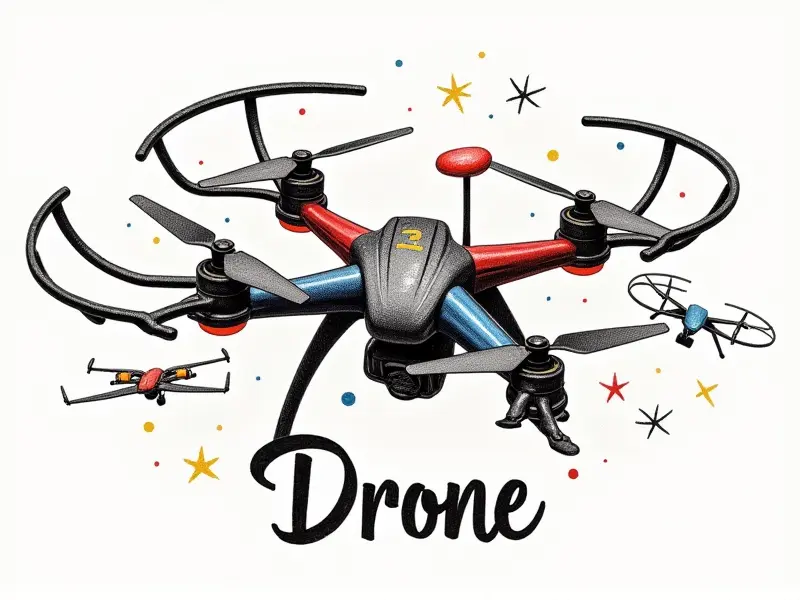How to fly Hubsan H216G?

How to Fly Hubsan H216G: A Comprehensive Guide for Beginners and Experts
The Hubsan H216G drone is a popular choice among hobbyists and enthusiasts due to its affordability and high performance capabilities. Whether you're a beginner or an experienced pilot, this guide will help you get the most out of your H216G.
Beginner's Guide to Hubsan H216G
If you're new to flying drones, the Hubsan H216G is a great place to start. This section covers everything from understanding basic drone terminology to familiarizing yourself with the remote control.
Fundamental Drone Concepts
- Pitch: The angle at which your drone tilts forward or backward, affecting its speed and altitude.
- Roll: Lateral movement that causes the drone to bank left or right.
- Yaw: Rotational movement around the vertical axis, allowing for turns.
Getting Acquainted with Your Remote Control
The remote control of the H216G features several essential buttons and sticks. Spend some time understanding their functions before your first flight:
- Main Stick: Controls pitch, roll, and yaw.
- Secondary Sticks: Used for throttle control and camera gimbal operation.
Mastering Hubsan H216G Flight Basics
To become proficient in flying the H216G, it's crucial to practice basic maneuvers. Start by mastering takeoffs, landings, and hovering before moving on to more complex movements.
Takeoff Procedure
- Ensure your drone is charged and properly assembled.
- Place the drone in an open area free from obstacles.
- Gently apply throttle until the H216G lifts off smoothly.
Landing Techniques
- Approach: Slowly decrease altitude and ensure stability.
- Touchdown: Gently lower the drone onto a flat surface to avoid damage.
- Shutdown: Turn off both the drone and remote control after landing.
Quick Start Guide for Hubsan H216G
This section provides step-by-step instructions on how to quickly set up your new H216G and get it airborne.
Initial Setup
- Unbox: Carefully unpack the drone, propellers, remote control, and other accessories.
- Battery Installation: Insert batteries into the drone and remote control.
- Propeller Attachment: Install the propellers according to the manufacturer's instructions.
First Flight Preparation
Before your first flight, make sure you have a clear understanding of the following:
- Check Weather Conditions: Avoid flying in windy or rainy conditions.
- Select a Safe Environment: Choose an open area with no obstructions.
Top Tips for Flying Hubsan H216G
Here are some valuable tips to enhance your flying experience and ensure the longevity of your H216G:
Battery Management
- Charge Before Flight: Always charge your drone's battery fully before each flight.
- Lithium-Ion Safety: Avoid overcharging or discharging batteries.
Maintaining Optimal Performance
- Regular Maintenance: Inspect your drone for any signs of wear and tear after each flight.
- Tighten Screws: Ensure all screws are secure to prevent loose parts during flights.
Essential Skills for Hubsan H216G
Beyond basic flying, developing these skills will significantly improve your proficiency with the H216G:
Precision Hovering
- Steady Hands: Practice maintaining a stable hover at various altitudes.
- Sensor Calibration: Calibrate your drone's sensors for optimal performance in different environments.
Camera Control
- Gimbal Operation: Master controlling the camera gimbal for smooth video recording and photography.
- Stabilization: Use stabilization features to capture clear, shake-free footage.
Navigate with Confidence in H216G
Flying your Hubsan H216G confidently requires understanding its navigation systems and practicing various flight scenarios:
GPS Functionality
- Auto Takeoff/Landing: Leverage GPS to set up automatic takeoffs and landings.
- Return Home Mode: Enable this feature for safe returns in case of low battery or signal loss.
Satellite Positioning System (SPS)
- Enhanced Accuracy: Use SPS to achieve more precise positioning and navigation.
- Mission Planning: Create flight paths for advanced missions using GPS coordinates.
Flying Smoothly with Hubsan H216G
To ensure smooth, professional-quality flights, focus on these key aspects:
Control Stability
- Maintain a Steady Hand: Avoid sudden movements that could cause instability.
- Smooth Inputs: Apply gradual and consistent control inputs for smoother flight.
Camera Smoothness
- Gimbal Adjustment: Adjust the gimbal settings to match your shooting style.
- Stabilization Settings: Utilize stabilization modes to achieve smoother footage.
Fully Utilizing Hubsan H216G Features
The H216G offers numerous features that can greatly enhance your flying experience:
Advanced Flight Modes
- Follow Me Mode: Enable this mode to have the drone follow you automatically.
- Circle Tracking: Use circle tracking for continuous shots of a moving subject.
Software Updates
- Stay Updated: Regularly check for firmware updates to access new features and improvements.
- Compatibility Check: Ensure your drone is compatible with the latest software versions.
Fully Utilizing Hubsan H216G Features Continued
Expanding on advanced features:
Advanced Camera Functions
- Resolution Settings: Adjust camera settings for optimal image quality.
- Burst Mode Photography: Capture multiple shots in quick succession.
Data Logging and Analysis
- Flight Data Recording: Log flight data for analysis and improvement.
- Mission Planning Software: Use mission planning tools to design complex flight paths.
Conclusion
Flying your Hubsan H216G confidently requires mastering basic maneuvers, understanding advanced features, and maintaining optimal performance. By following this comprehensive guide, you'll be able to enjoy a seamless flying experience with your drone.
Happy Flying!

